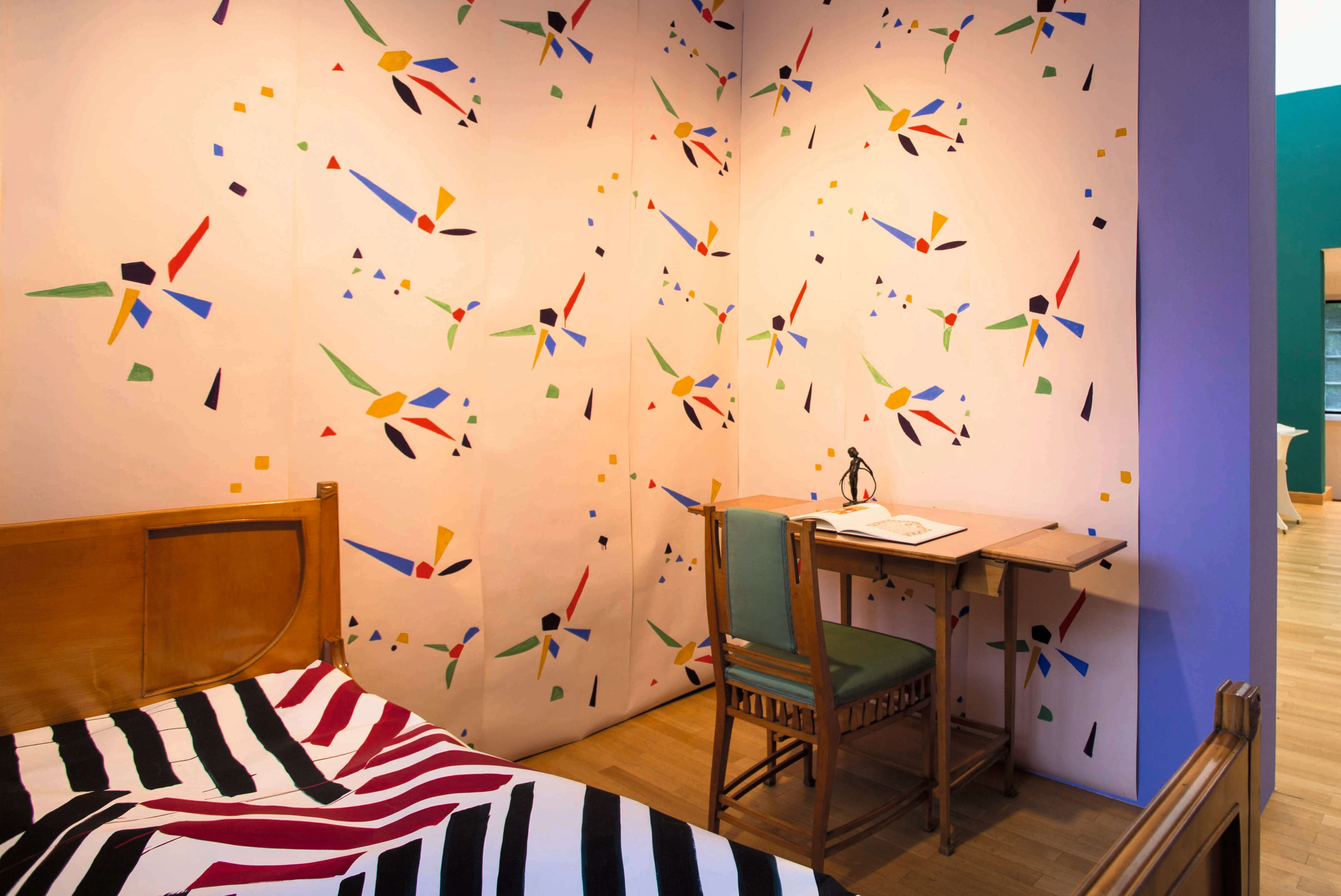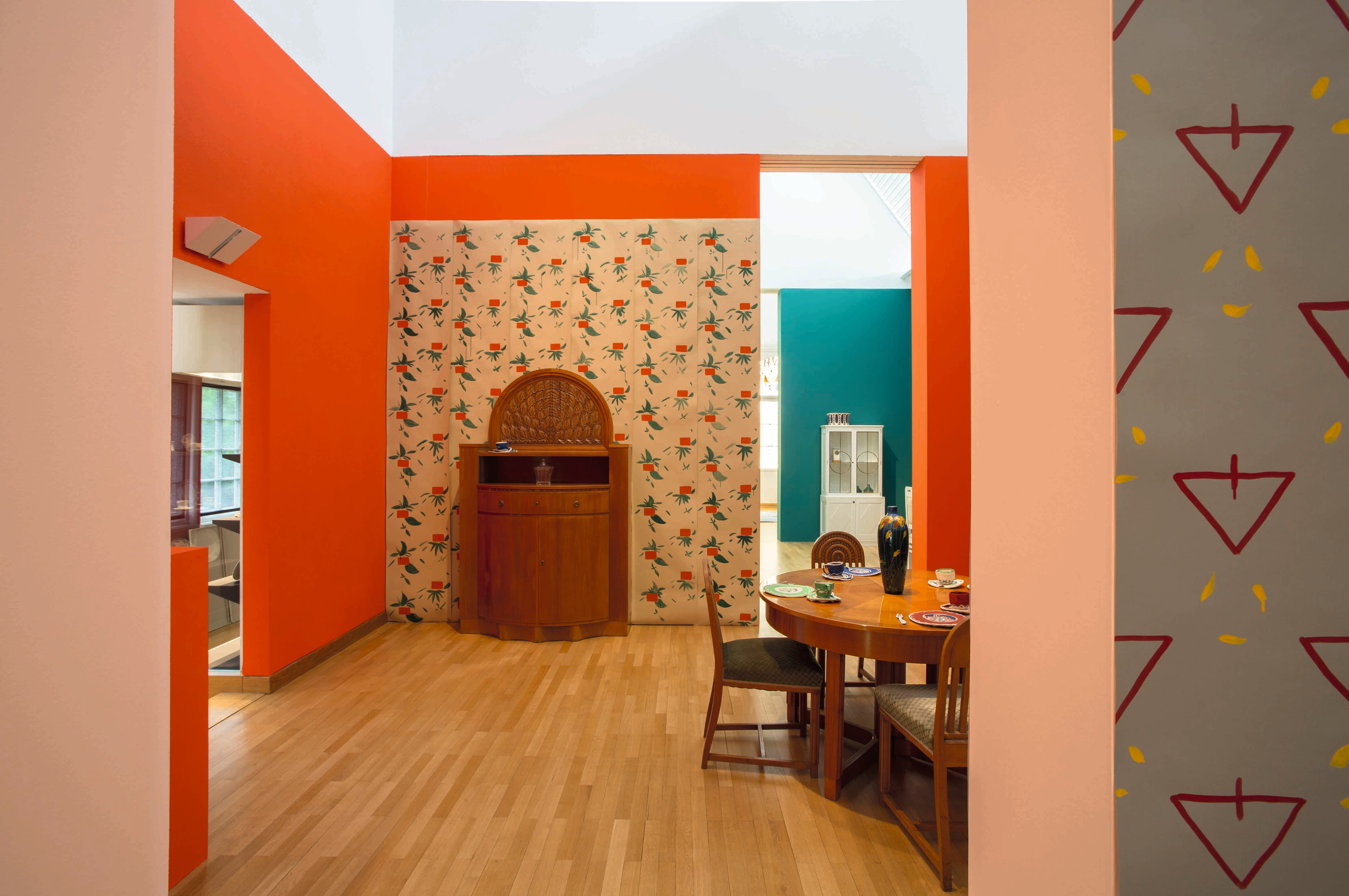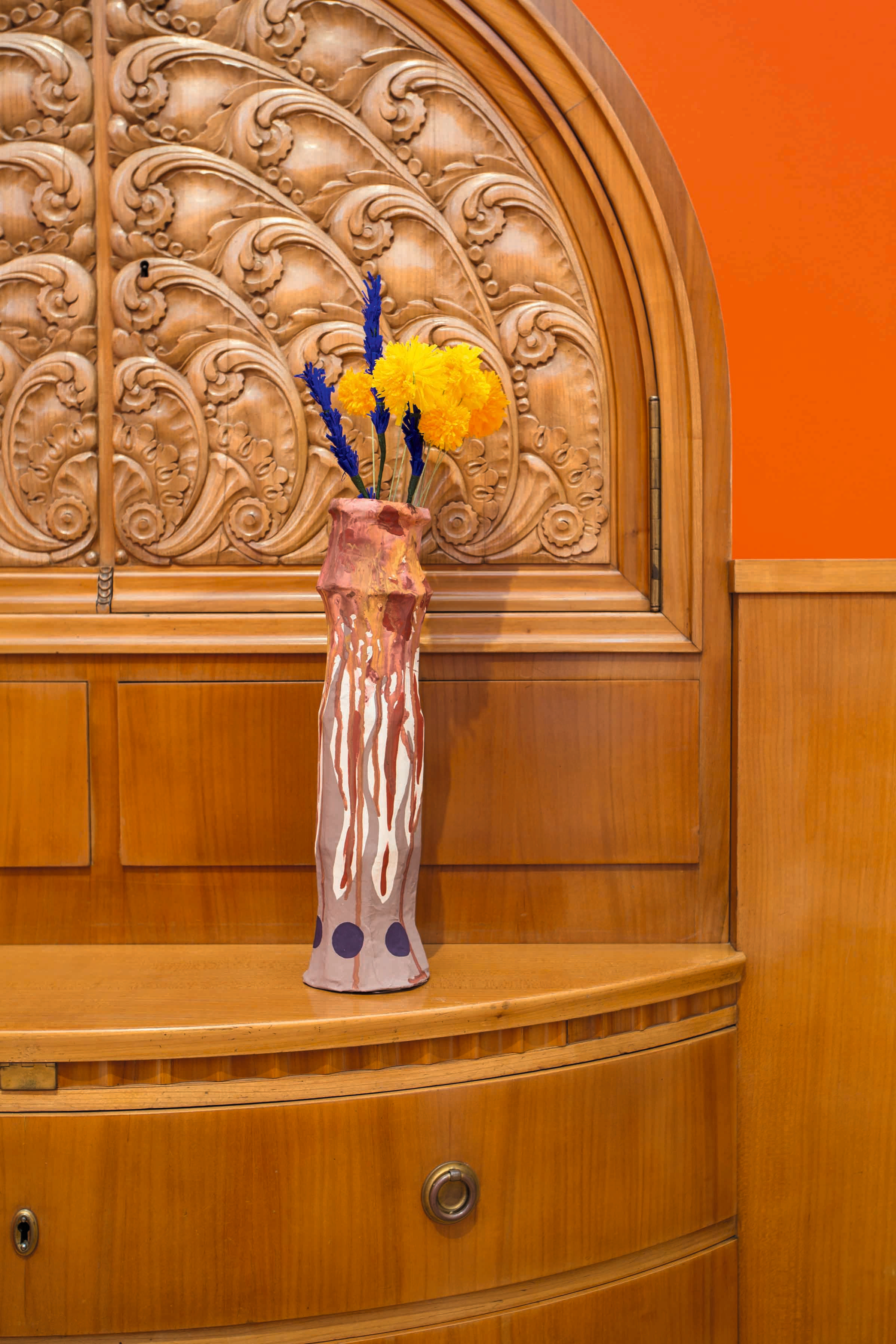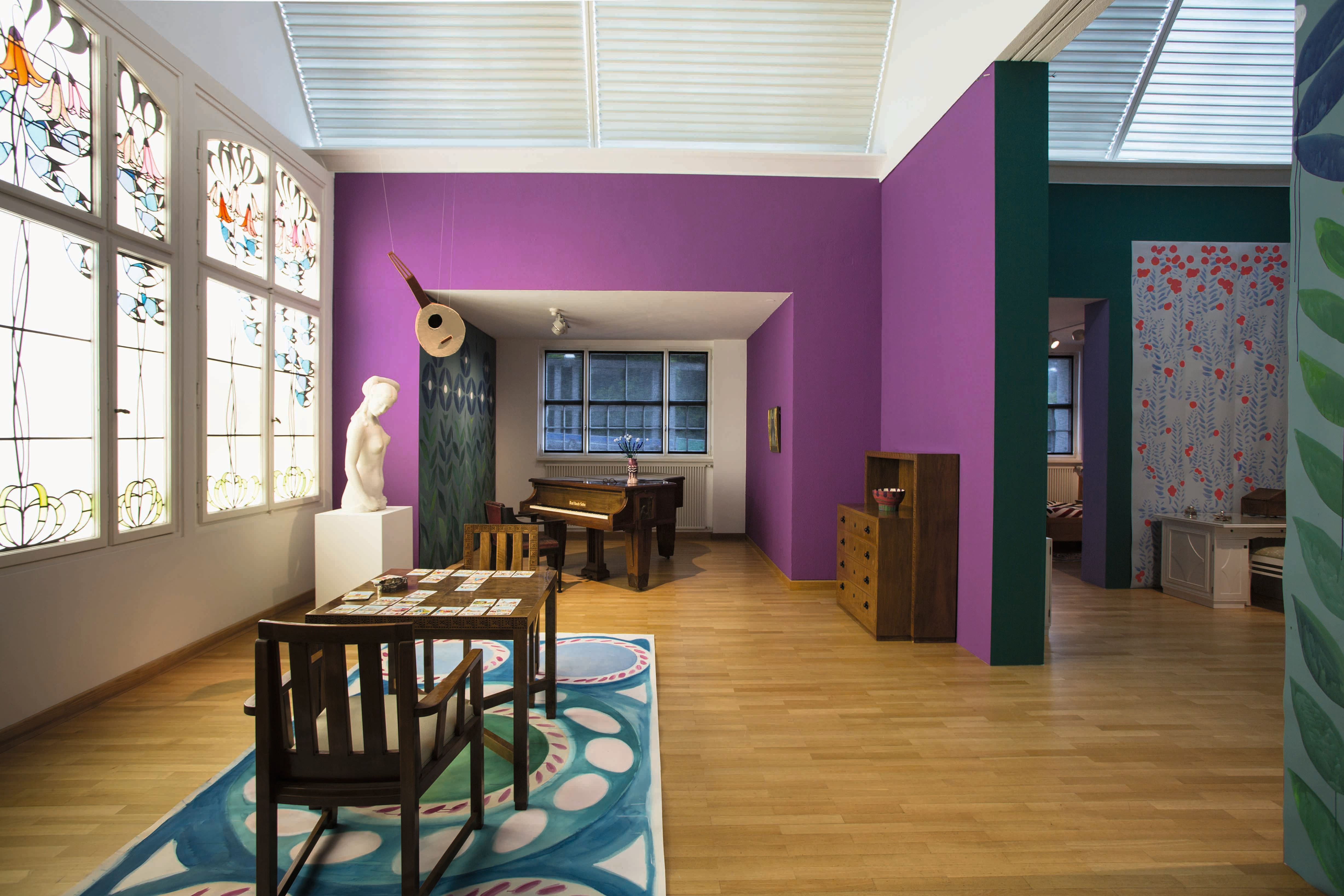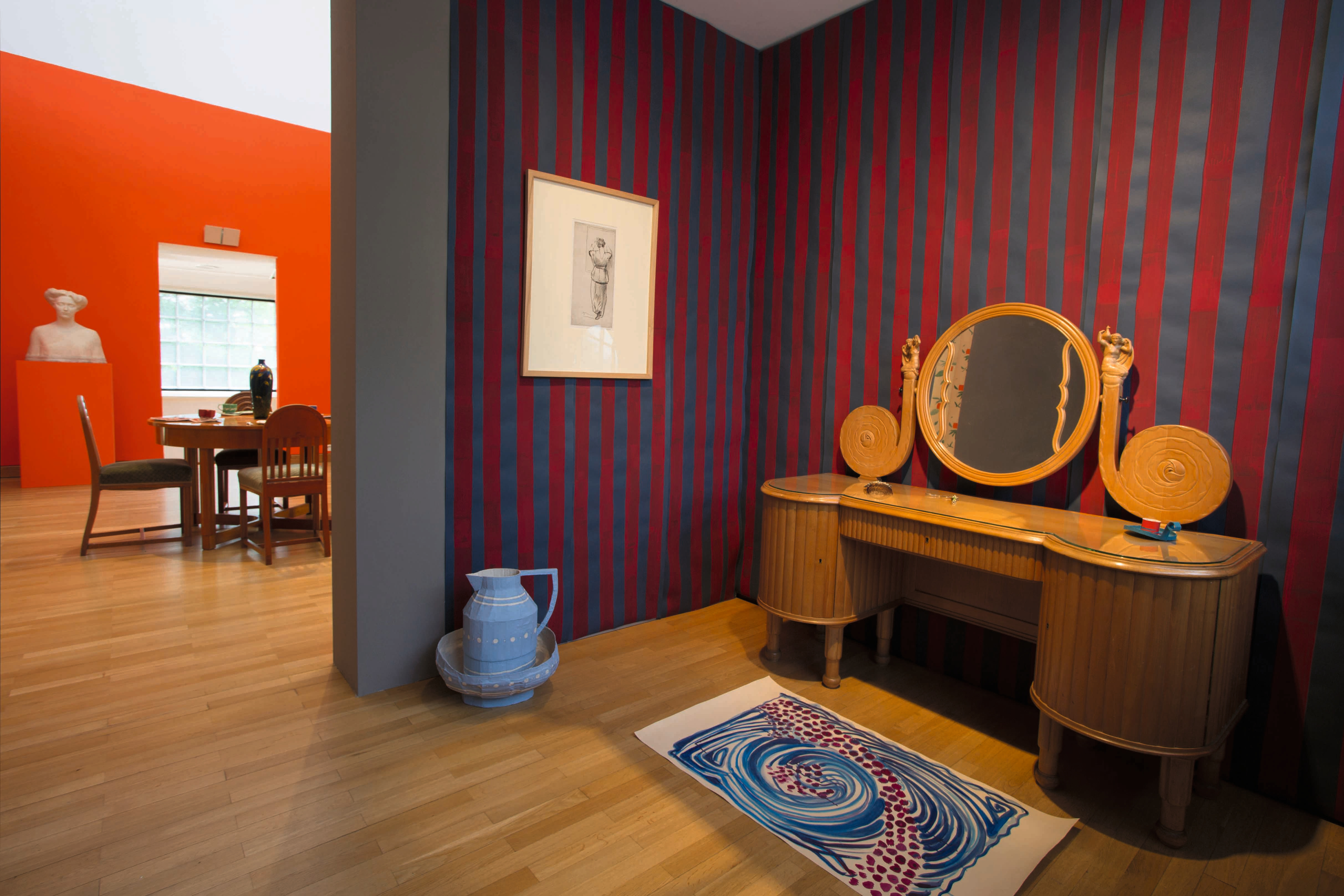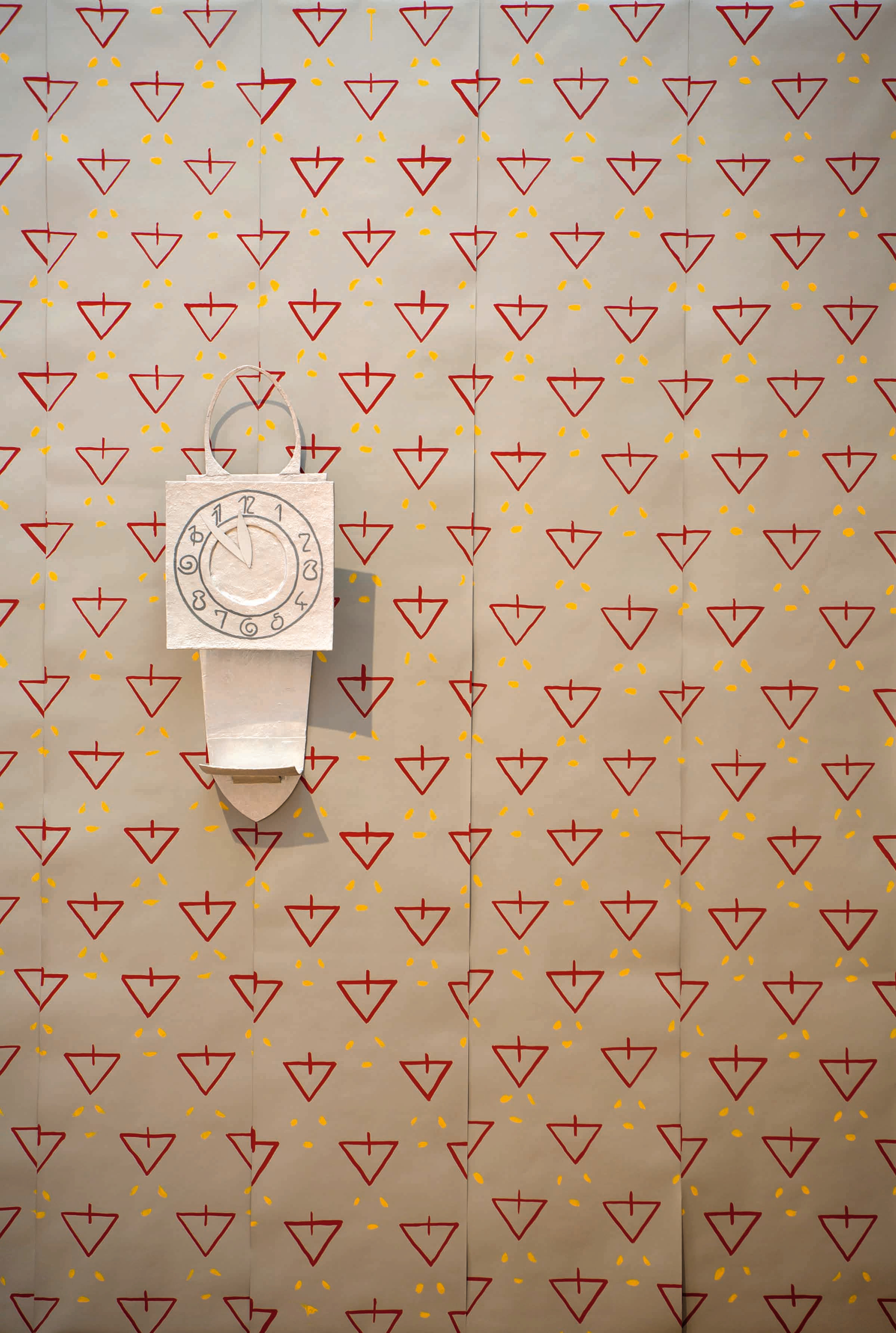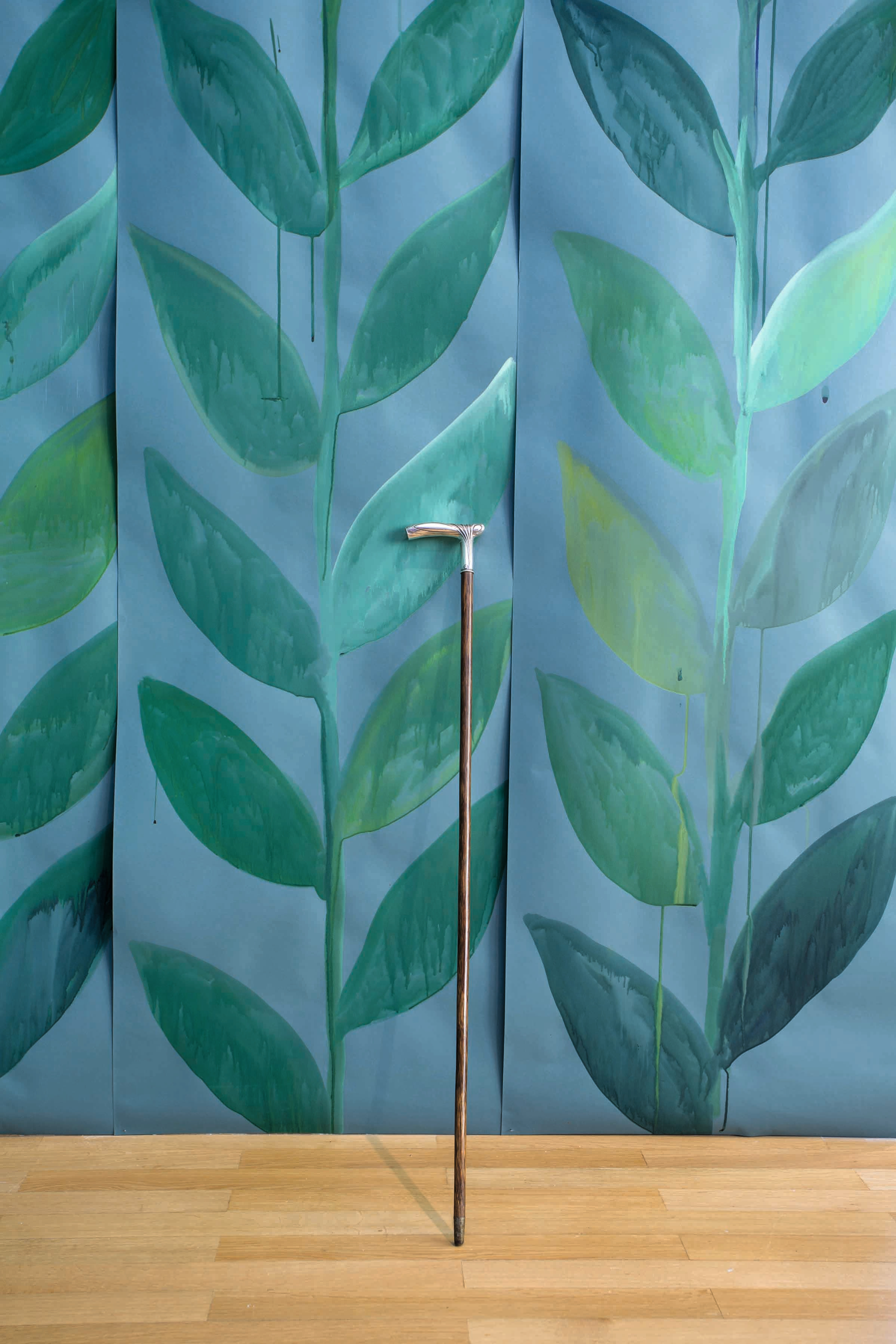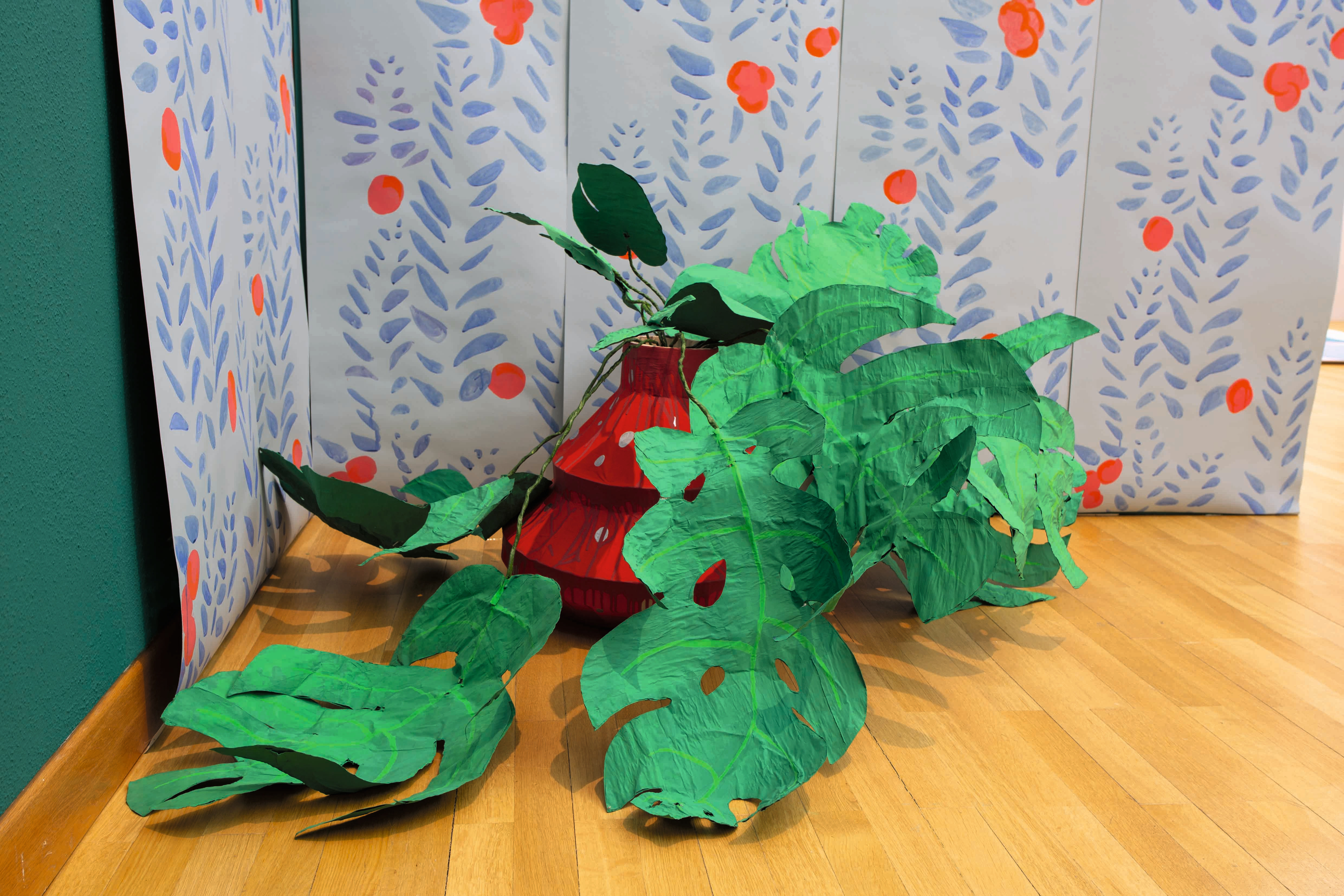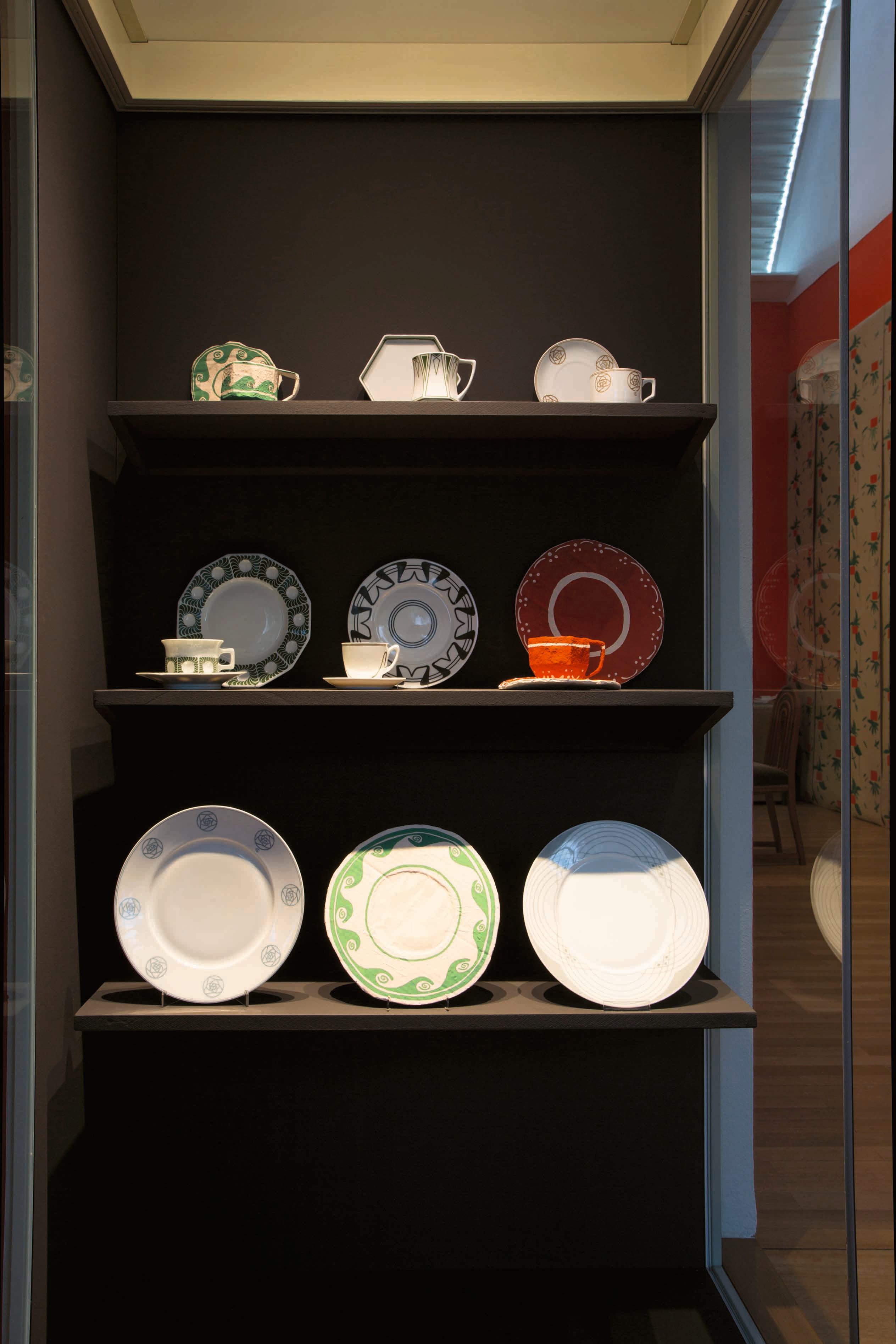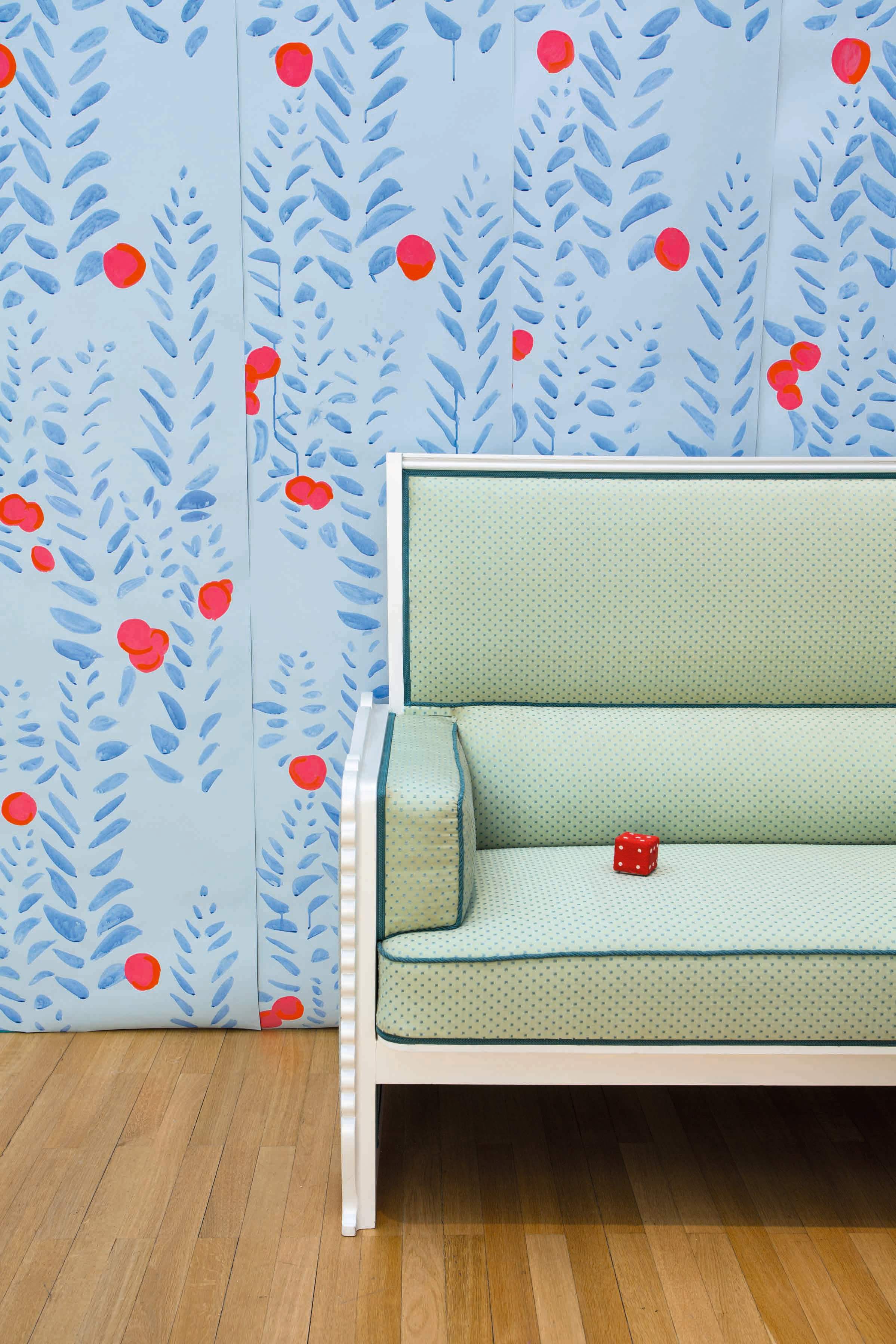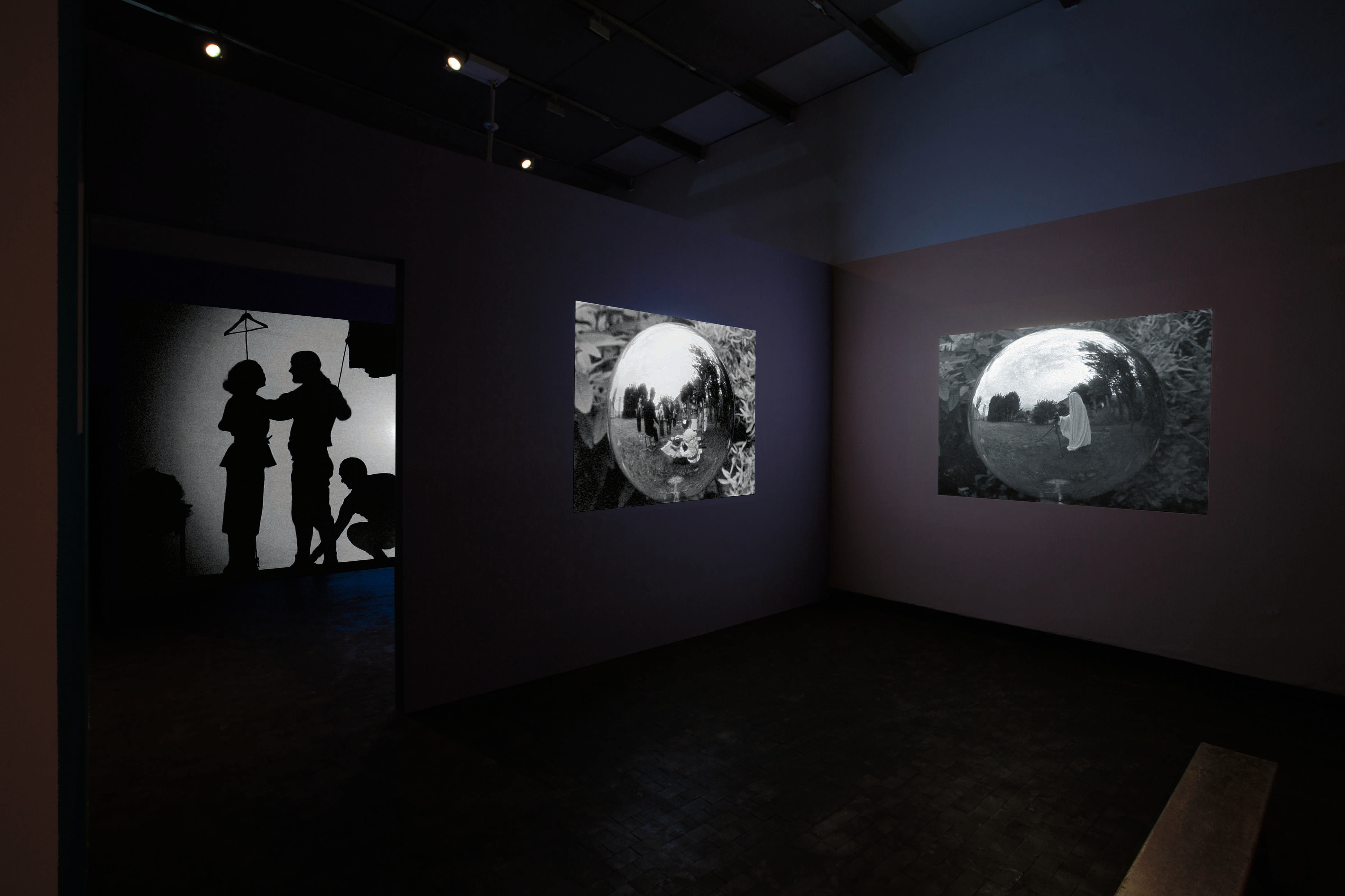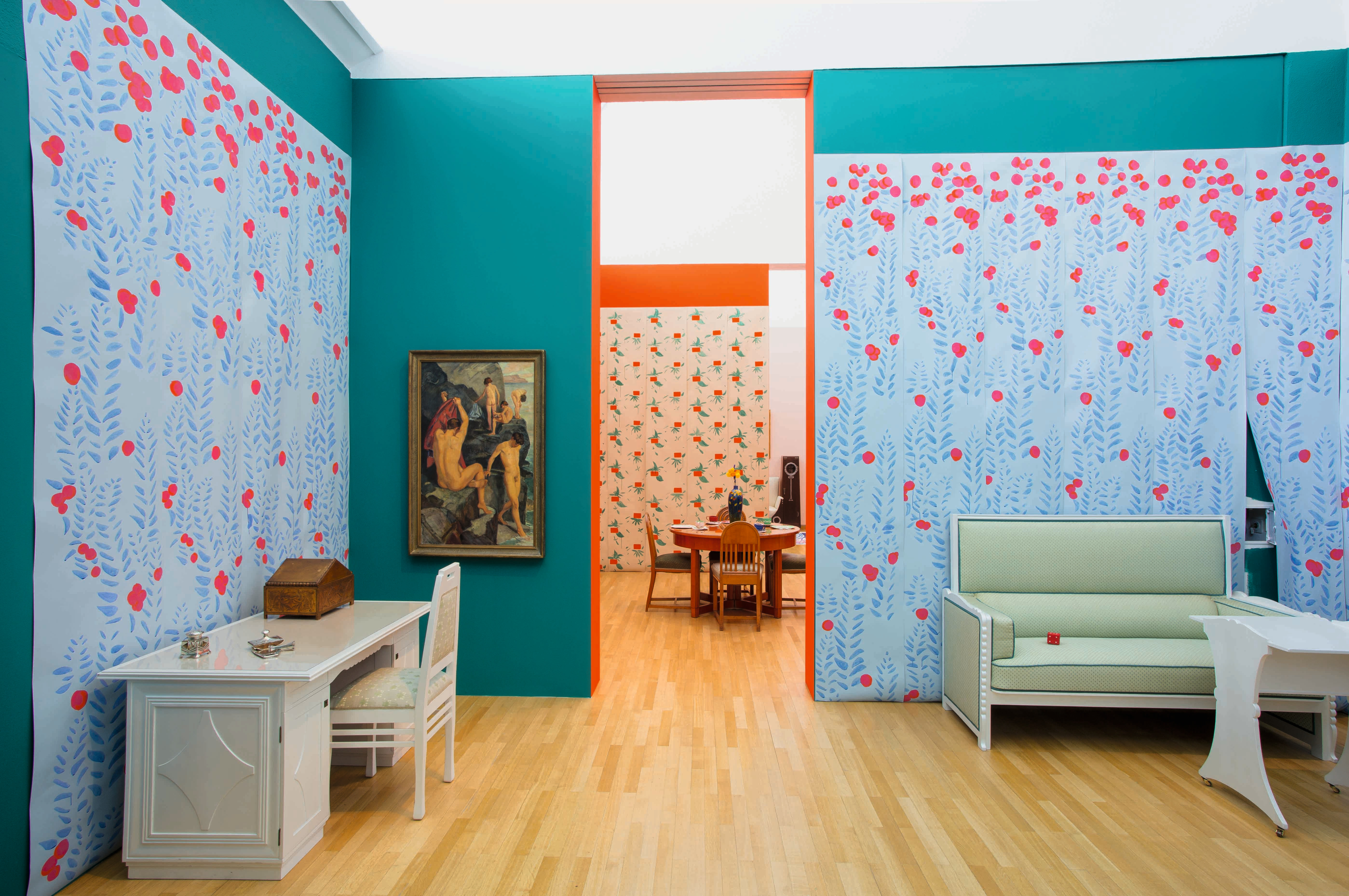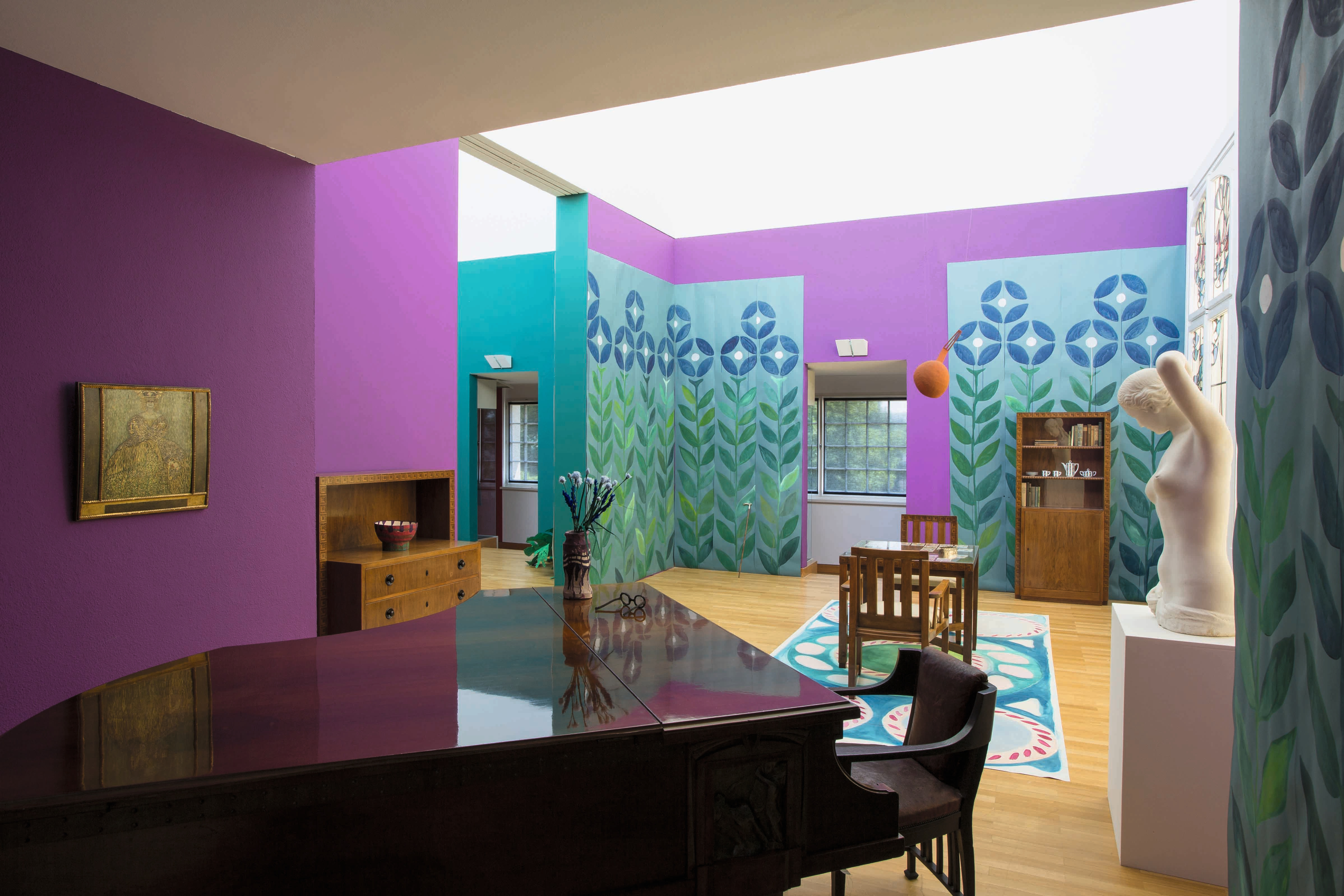Overview
The Institute Mathildenhöhe is showing a solo show by the Paris-based object and media artist Ulla von Brandenburg from June 10 to September 16, 2018. In her work, she combines different genres such as sculpture, installation and film, performance, costume and music, paper cutting and wall drawing to create symbolic overall productions. The exhibition space usually becomes a stage for her to deal with forms of expression and methods of theater, playing with fiction and reality, role and identity. In doing so, she draws on historical set pieces of various origins and meanings, which, among other things, relate to early modernism.
For her solo show in the Museum Künstlerkolonie, Ulla von Brandenburg is focusing on a new installation specially developed for the location, which is related to the unique history of the Mathildenhöhe as a think tank and laboratory of modernity. In four large exhibitions between 1901 and 1914, new standards were set there with an innovative concept that included the inspection of fully furnished and inhabited artist villas, which still shape our understanding of exhibition culture and industrial design today. Based on these residential buildings, the artist designs a fictional apartment with a salon, music, ladies 'and gentlemen's rooms, including various furnishings that are made entirely of paper, for the former studio building of the Darmstadt artists' colony. The exhibition room - part apartment, part department store, part setting - is transformed into a surreal overall staging in which timelines, styles and materials are mixed. The focus is not only on individual objects and their historical reception, but also on questions of presentation, perception and communication.
The central themes of this walk-in installation, such as playing with role and identity or the transition between stage and real space, are also reflected in the second part of the exhibition. In the historical sculpture studios Ulla von Brandenburg stages a selection of her films on colored walls, which are always the focus of her work. Overall, her site-specific installation and the presentation of her films combine to form a hybrid overall arrangement in which the artist increasingly turns to the visitor, or more precisely: the relationship between body and space, movement and perception. Because when the visitor enters these settings, the exhibition architecture functions as an interaction space between him and the installation.


